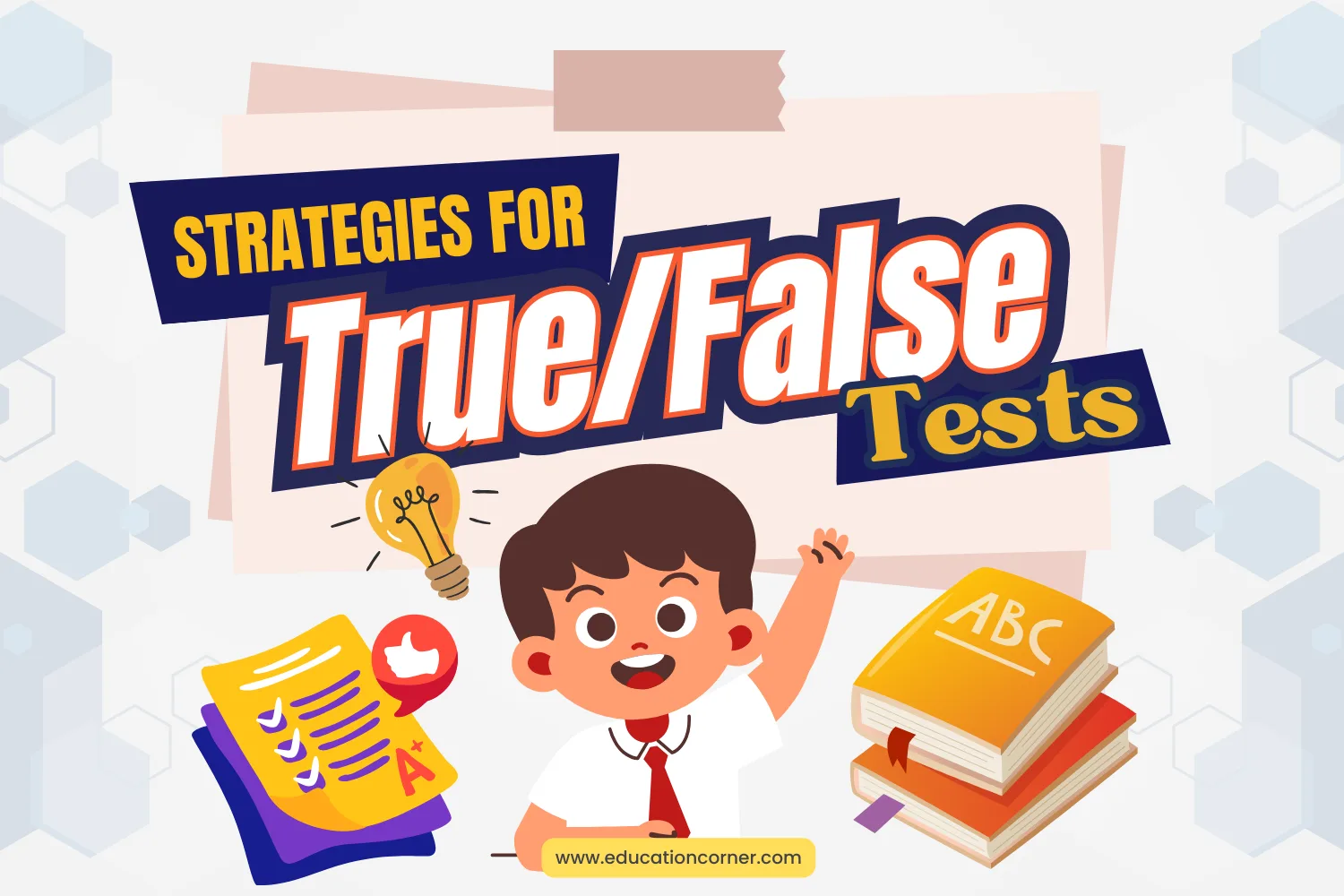Although most students prefer true and false questions, these types of questions can be tricky.
The following strategies will enhance your ability to answer true/false questions correctly:
Approach each statement as if it were true
Approach each statement as if it were true and then determine if any part of the statement is false. Just one false part in a statement will make the entire statement false.
For a sentence to be true, every part must be “true”
At first glance, a sentence may appear to be true because it contains facts and statements that are true. However, if just one part of the sentence is false, then the entire sentence is false.
A sentence may be mostly true because it contains correct information but it is ultimately false if it contains any incorrect information. Pay attention to “qualifiers”
Carefully read the question and look for qualifiers or keywords that provide clues to the correct answer. Qualifiers words like:
- sometimes
- seldom
- few
- always
- every
- often
- frequently
- never
- generally
- ordinarily
restrict or open up the possibilities of making accurate statements. More modest qualifiers, such as “sometimes, often, many, few, generally, etc”, are more likely to reflect a true statement, sentence, or answer. Stricter qualifiers, such as “always” or “never”, often reflect a false statement, sentence, or answer.
Don’t let “negatives” confuse you
Negatives, such as “no, not, cannot”, can be confusing within the context of a true/false sentence or statement. If a true/false sentence contains a negative, drop the negative word and then read what remains. Without the negative, determine whether the sentence is true or false. If the sentence (without the negative) is true, then the correct answer would be “false”.
Watch for statements with double negatives
Statements with two negative words are positive. For example, “It is unlikely the car will not win the race.” is the same as “It is likely the car will win the race. Negative words include not and cannot along with words beginning with the prefixes dis-, il-, im-, in-, ir-, non-, and un-.
Pay attention to “absolute” qualifiers
As we already discussed, qualifiers open up or restrict the possibilities of a statement being true or false. Absolute qualifiers, such as:
- all
- always
- never
- entirely
- completely
- best
- worst
- none
- absolutely
which do not allow for exceptions imply that the statement must be true 100% of time. In most cases, statements that contain absolute qualifiers are false.
Thoroughly examine long sentences and statements
Long sentences often contain groups of words and phrases separated or organized by punctuation. Read each word set and phrase individually and carefully. If one word set or phrase in the statement is false (even if the rest are true) then the entire statement is false and the answer is “false”.
Make an educated guess
If it will not negatively impact your score, and you’re unsure of the answer, make an educated guess. You have a 1 in 2 chance of being right. However, truth be told, often true/false tests contain more true answers than false answers. So if you’re completely unsure, guess “true”.
Longer statements may be false
The longer a true/false statement, the greater the likelihood the statement will be false. Remember, it only takes one part of a statement being false to make the entire statement false. The longer the statement, the more chance one part will be false. Reason statements tend to be false
Questions that state a reason tend to be false. Words including “because, reason, since, etc” often indicate a “reason” statement.
Budget your time
Before tackling even one true/false question, take a look at the entire test to see how many questions there are. If the test has 60 true/false questions, and you have a 1 hour time limit, then you should spend no more than 1 minute on each question. While some questions will require more time than others, remember, you can’t spend a lot of time on any one question.

